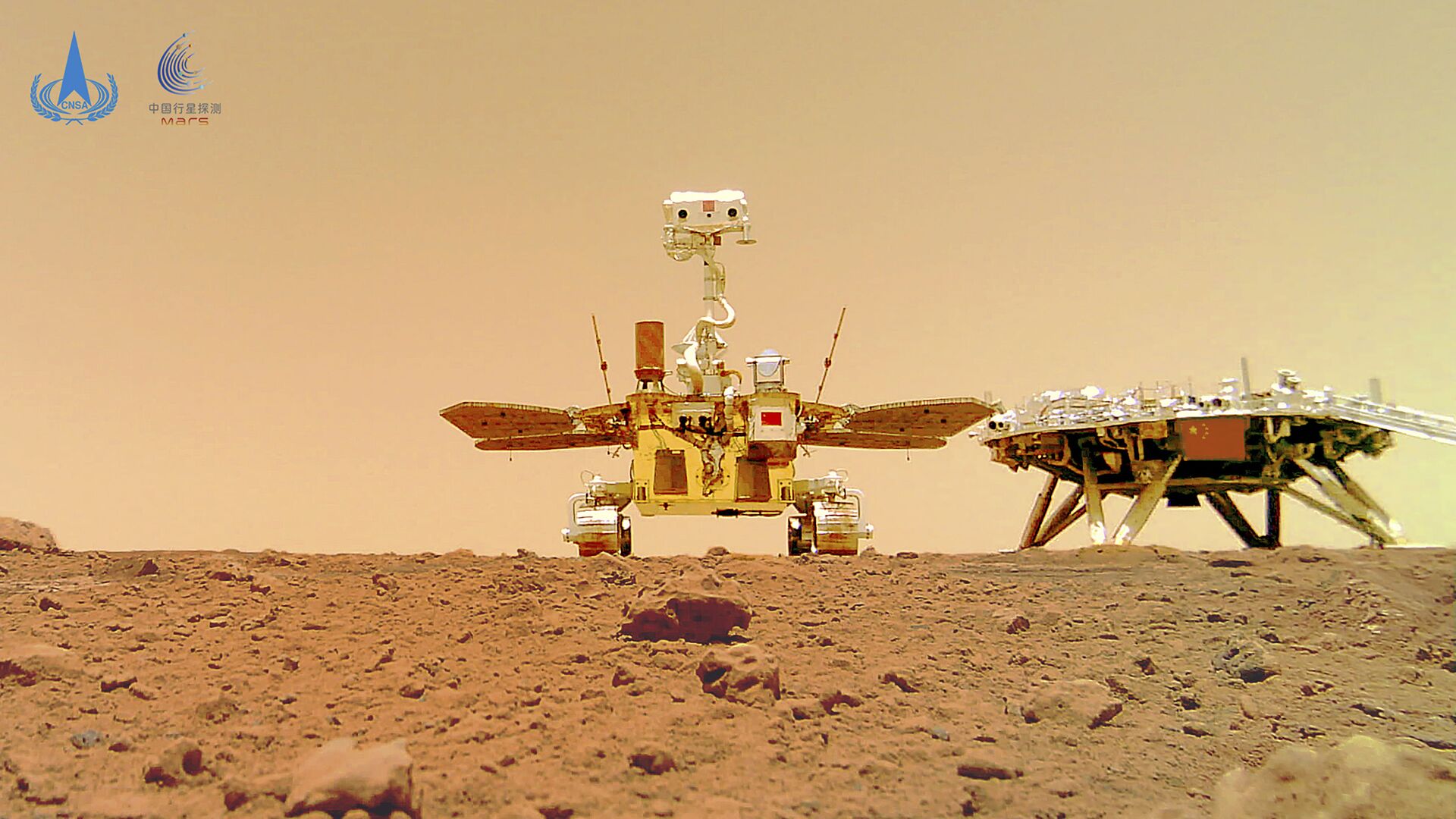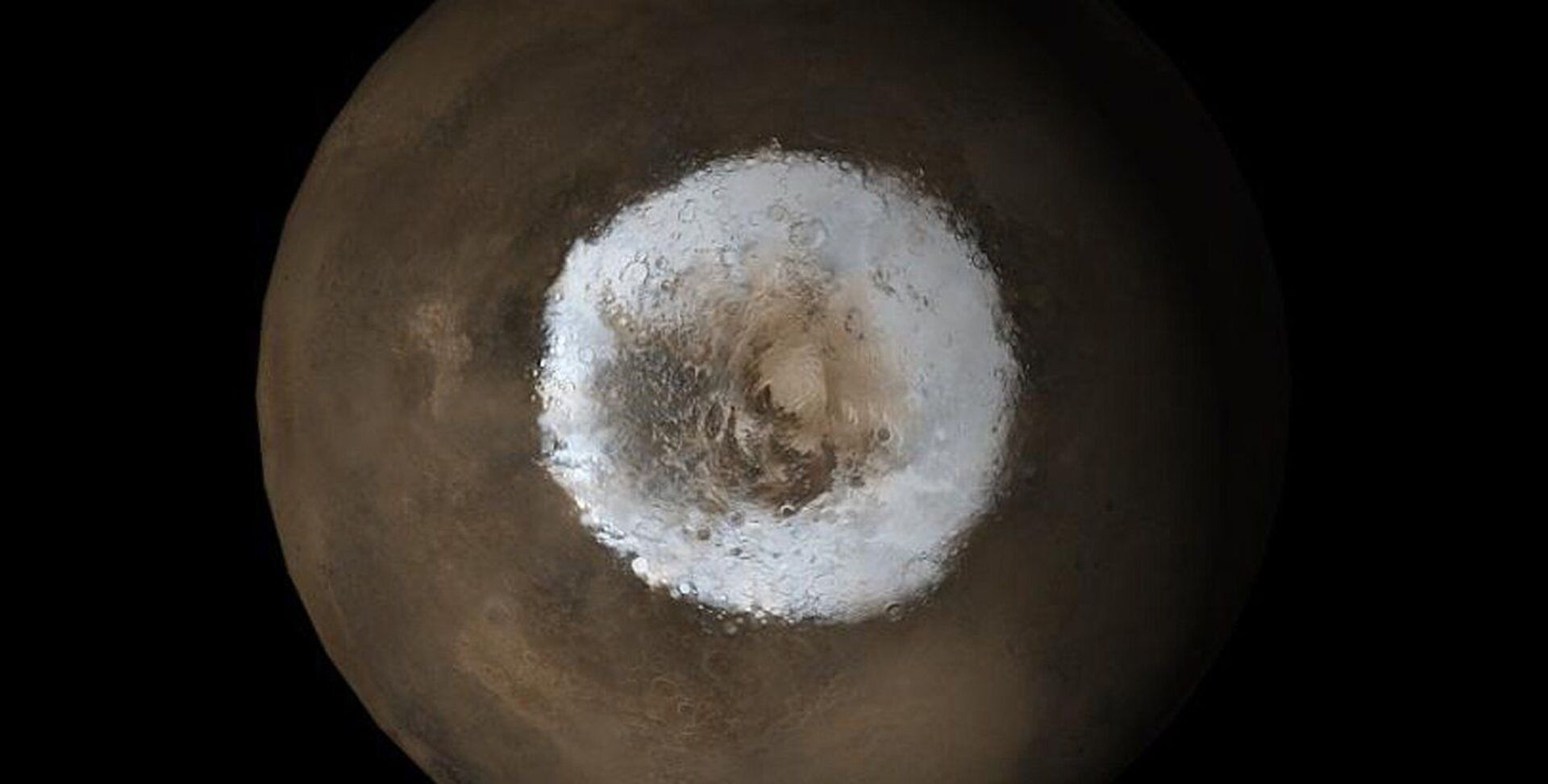https://sputnikglobe.com/20220512/chinas-zhurong-rover-finds-evidence-of-more-recent-water-on-mars-than-previously-believed-1095470434.html
China’s Zhurong Rover Finds Evidence of More Recent Water on Mars Than Previously Believed
China’s Zhurong Rover Finds Evidence of More Recent Water on Mars Than Previously Believed
Sputnik International
China’s Zhurong rover has been exploring Utopia Planitia, a vast dry seabed in Mars’ northern hemisphere, since touching down in May 2021. The rover’s mission... 12.05.2022, Sputnik International
2022-05-12T18:18+0000
2022-05-12T18:18+0000
2022-11-30T10:10+0000
china
rover
water
astronomy
mars
https://cdn1.img.sputnikglobe.com/img/07e5/07/0a/1083352673_0:0:3640:2048_1920x0_80_0_0_963dfbef0187ac0b23b7116b1c6f616f.jpg
An analysis of Zhurong’s first survey on Mars suggests that water still existed on the red planet long after it was believed to have dried up.The layers of minerals suggest the planet has gone through several cycles of being wet and warm, and then dry and cold, rather than the slow, steady slide from Earth-like to seemingly barren.The study was published in Science Advances on Wednesday.It had previously been believed that Mars lost nearly all of its water and atmosphere about 3 billion years ago, during a period called the Hesperian period, which preceded the present Amazonian period. However, the evidence Zhurong found points to water activity in Utopia Planitia just 700 million years ago.Moreover, the water seems to be locked inside the rock and soil, meaning not nearly as much of Mars’ water was lost to space as previously believed. Research published last year by the California Institute of Technology and the US space agency NASA found that between 30% and 90% of Mars’ original water is trapped in minerals in the crust.Additional water exists in Mars’ polar ice caps, alongside solidified carbon dioxide.
china
mars
Sputnik International
feedback@sputniknews.com
+74956456601
MIA „Rossiya Segodnya“
2022
Sputnik International
feedback@sputniknews.com
+74956456601
MIA „Rossiya Segodnya“
News
en_EN
Sputnik International
feedback@sputniknews.com
+74956456601
MIA „Rossiya Segodnya“
Sputnik International
feedback@sputniknews.com
+74956456601
MIA „Rossiya Segodnya“
china, rover, water, astronomy, mars
china, rover, water, astronomy, mars
China’s Zhurong Rover Finds Evidence of More Recent Water on Mars Than Previously Believed
18:18 GMT 12.05.2022 (Updated: 10:10 GMT 30.11.2022) China’s Zhurong rover has been exploring Utopia Planitia, a vast dry seabed in Mars’ northern hemisphere, since touching down in May 2021. The rover’s mission includes analyzing the rocks and sediments to look for evidence of water - and perhaps also of life.
An analysis of Zhurong’s first survey on Mars suggests that water still existed on the red planet long after it was believed to have dried up.
"The most significant and novel thing is that we found hydrated minerals at the landing site which stands on the young Amazonian terrain, and these hydrated minerals are (indicators) for the water activities such as (groundwater) activities," lead study author Yang Liu, a researcher at the Chinese Academy of Sciences' State Key Laboratory of Space Weather and the academy's Center for Excellence in Comparative Planetology,
told CNN.
The layers of minerals suggest the planet has gone through several cycles of being wet and warm, and then dry and cold, rather than the slow, steady slide from Earth-like to seemingly barren.
The study was published in
Science Advances on Wednesday.
It had previously been believed that Mars lost nearly all of its water and atmosphere about 3 billion years ago, during a period called the Hesperian period, which preceded the present Amazonian period. However, the evidence Zhurong found points to water activity in Utopia Planitia just 700 million years ago.
Moreover, the water seems to be locked inside the rock and soil, meaning not nearly as much of Mars’ water was lost to space as previously believed.
Research published last year by the California Institute of Technology and the US space agency NASA found that between 30% and 90% of Mars’ original water is trapped in minerals in the crust.
"This is a very interesting result," Eva Scheller, a planetary scientist at CalTech who was lead author on the 2021 paper with NASA,
told Space.com about the recent Chinese findings. "We have very few recorded evidences of 'young' liquid water systems on Mars. And for the ones we have, they were usually in the form of salt minerals."
Additional water exists in
Mars’ polar ice caps, alongside solidified carbon dioxide.


